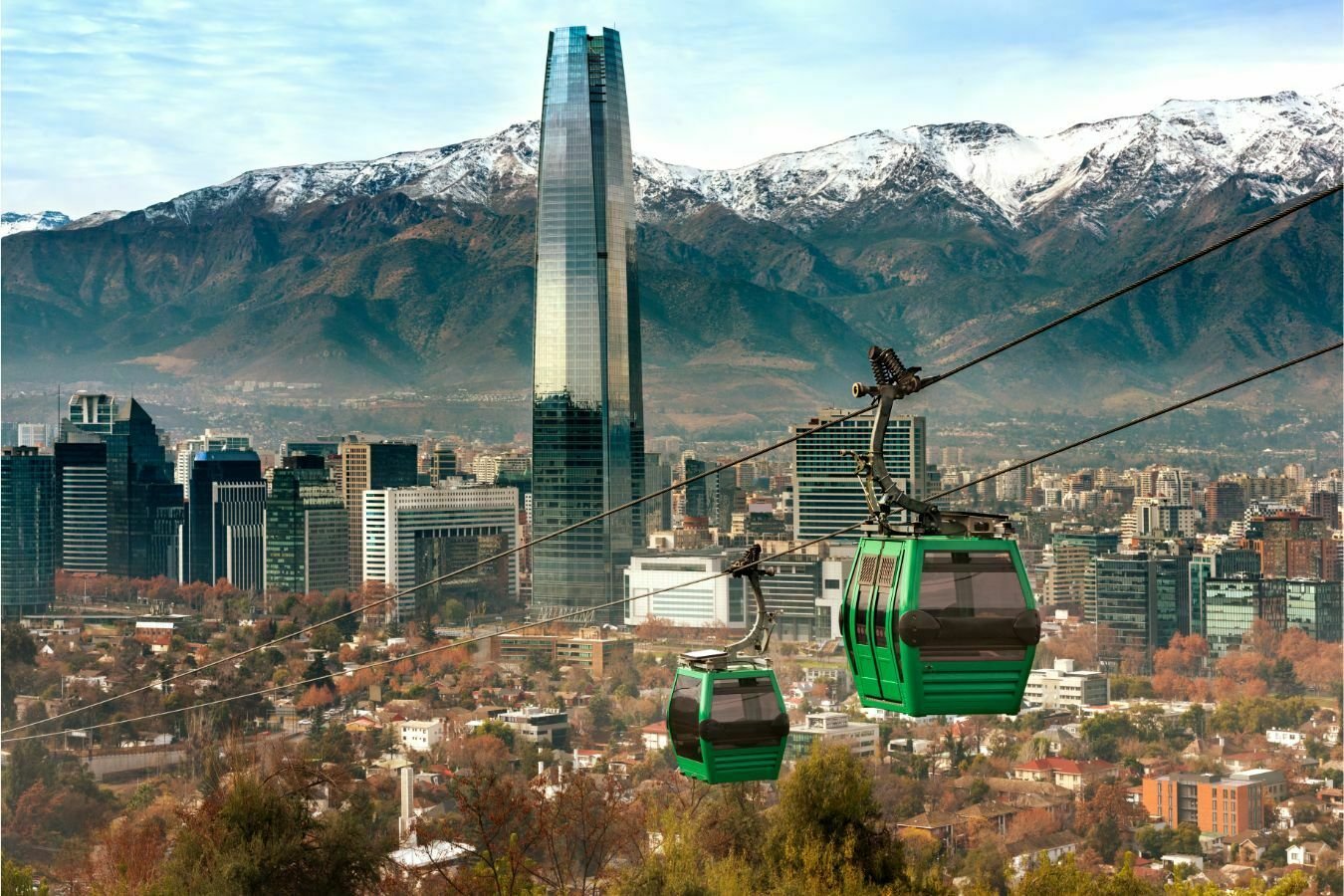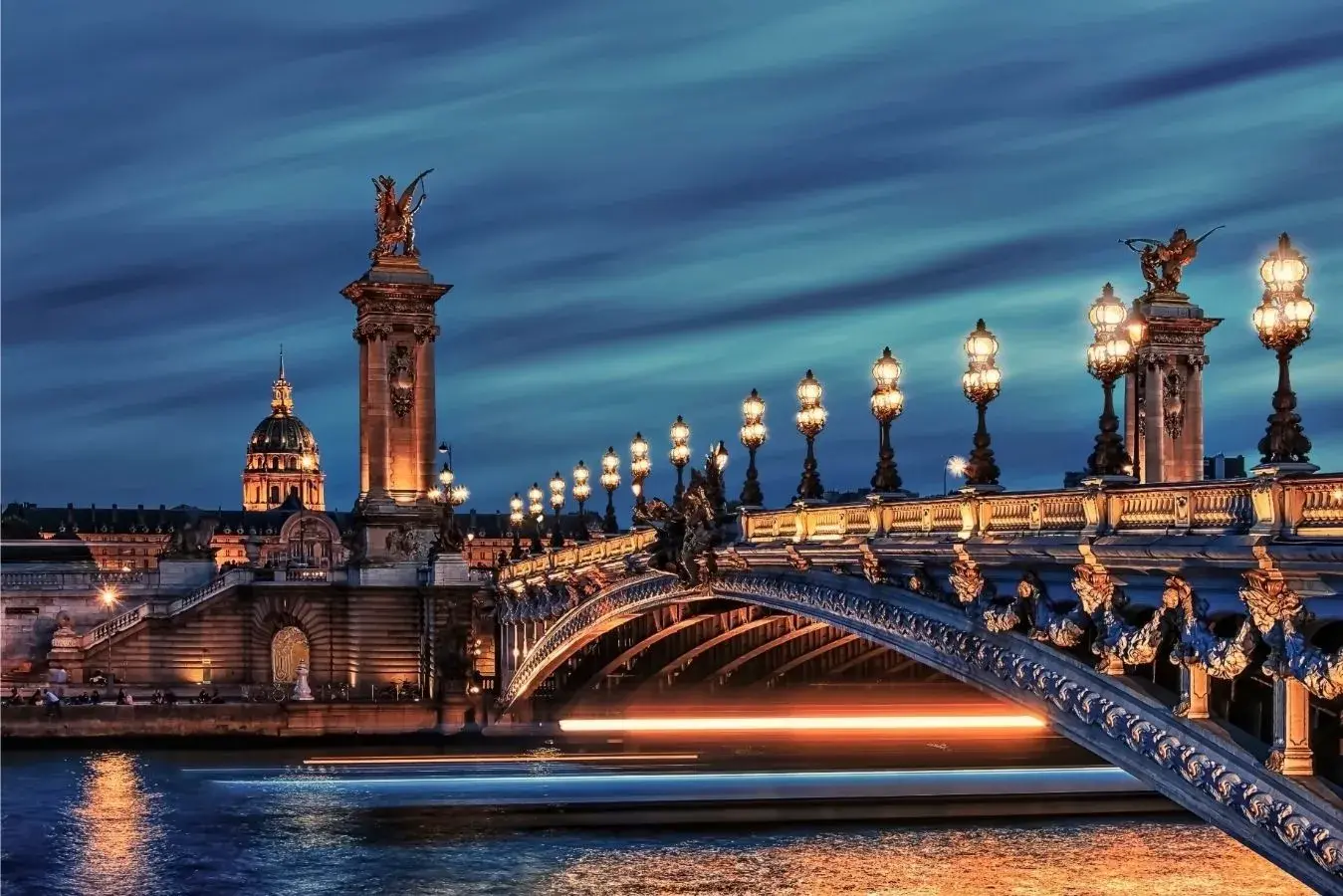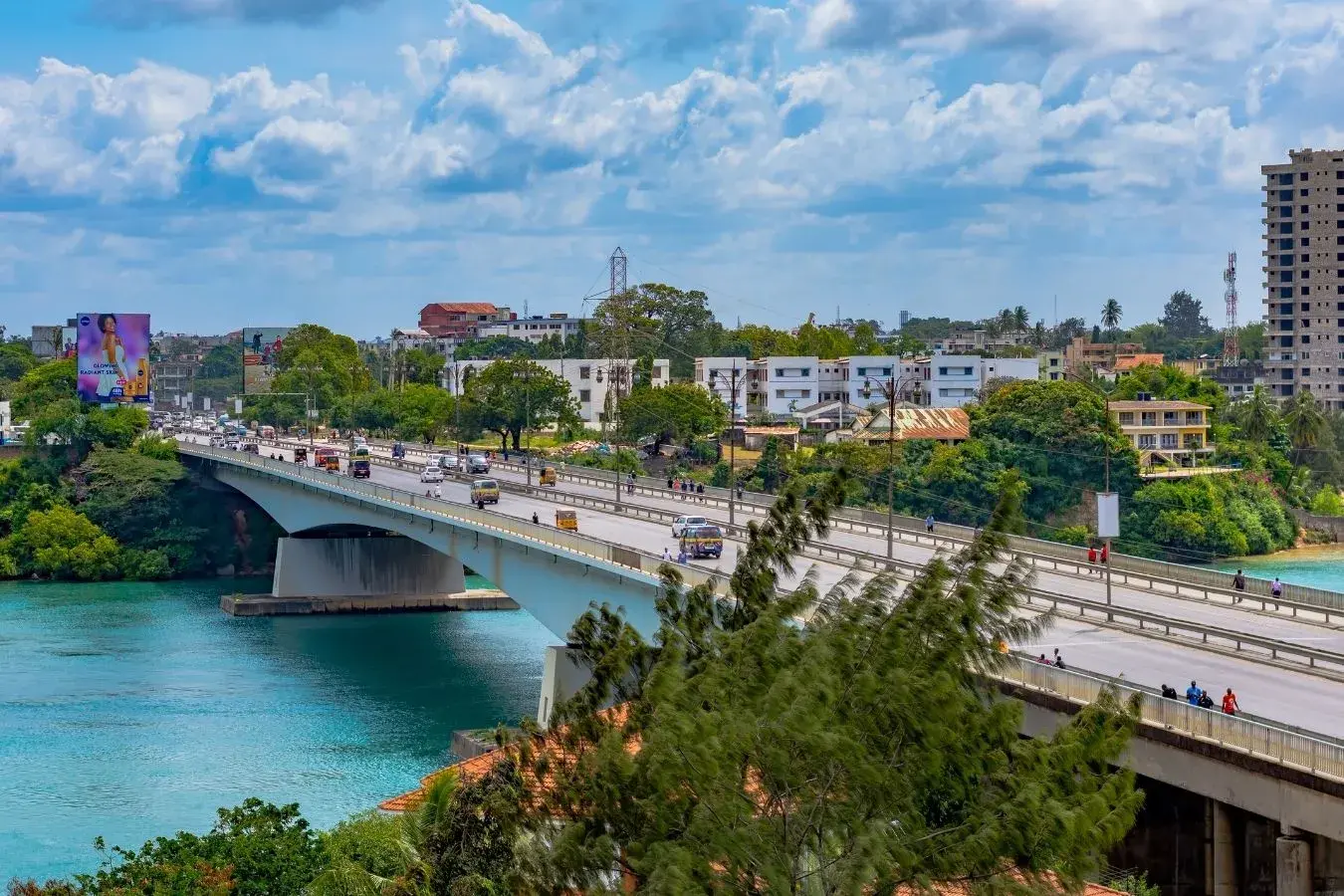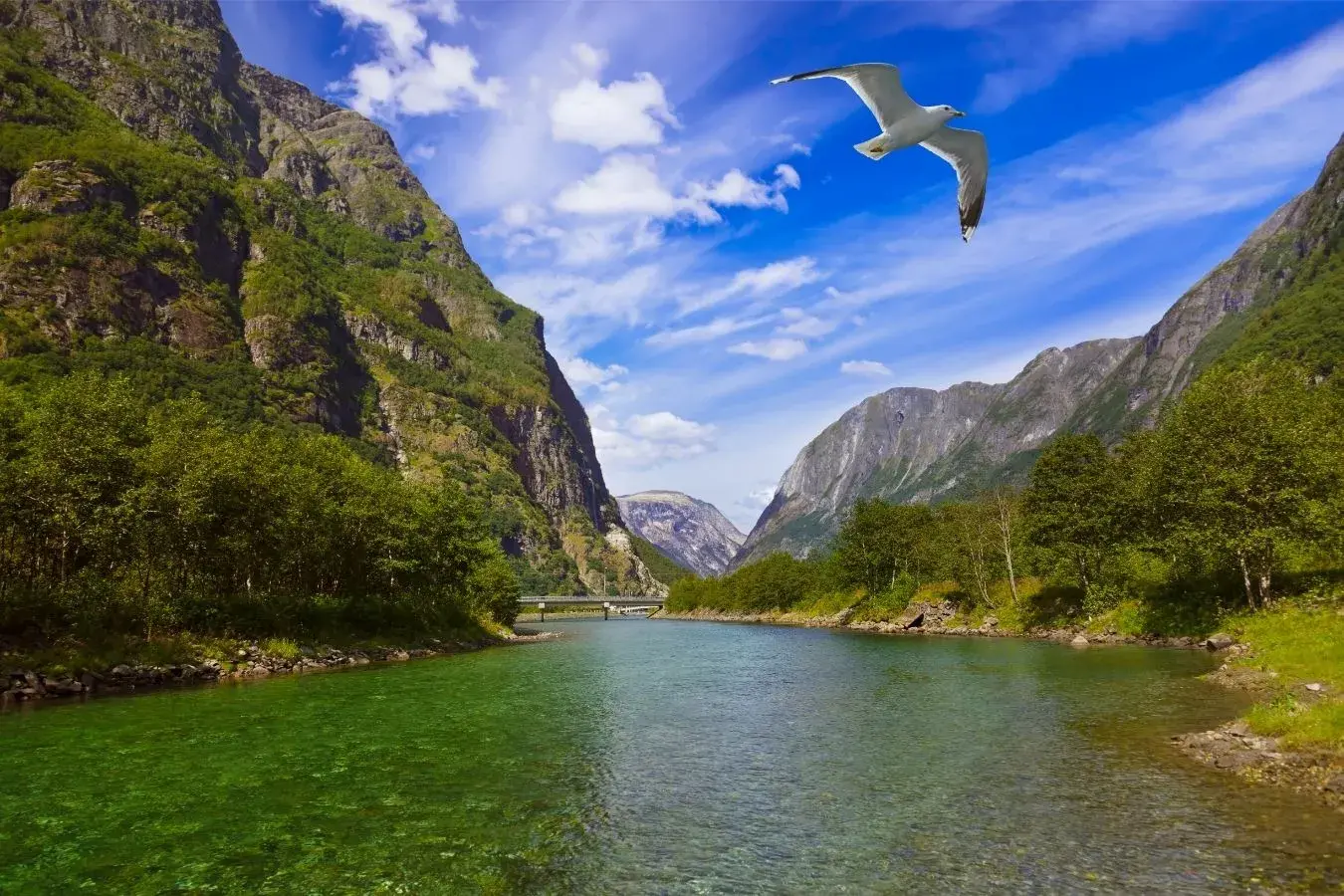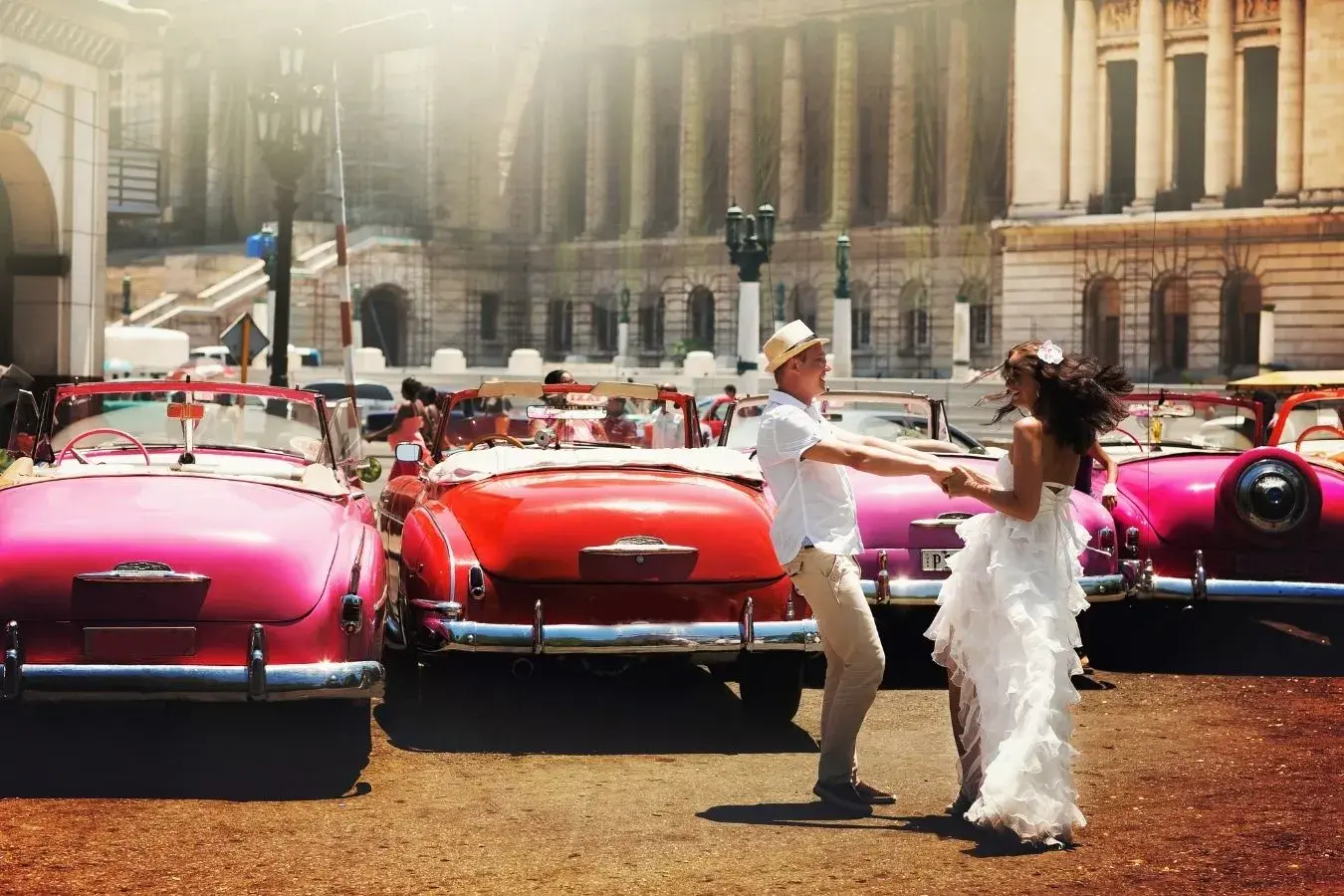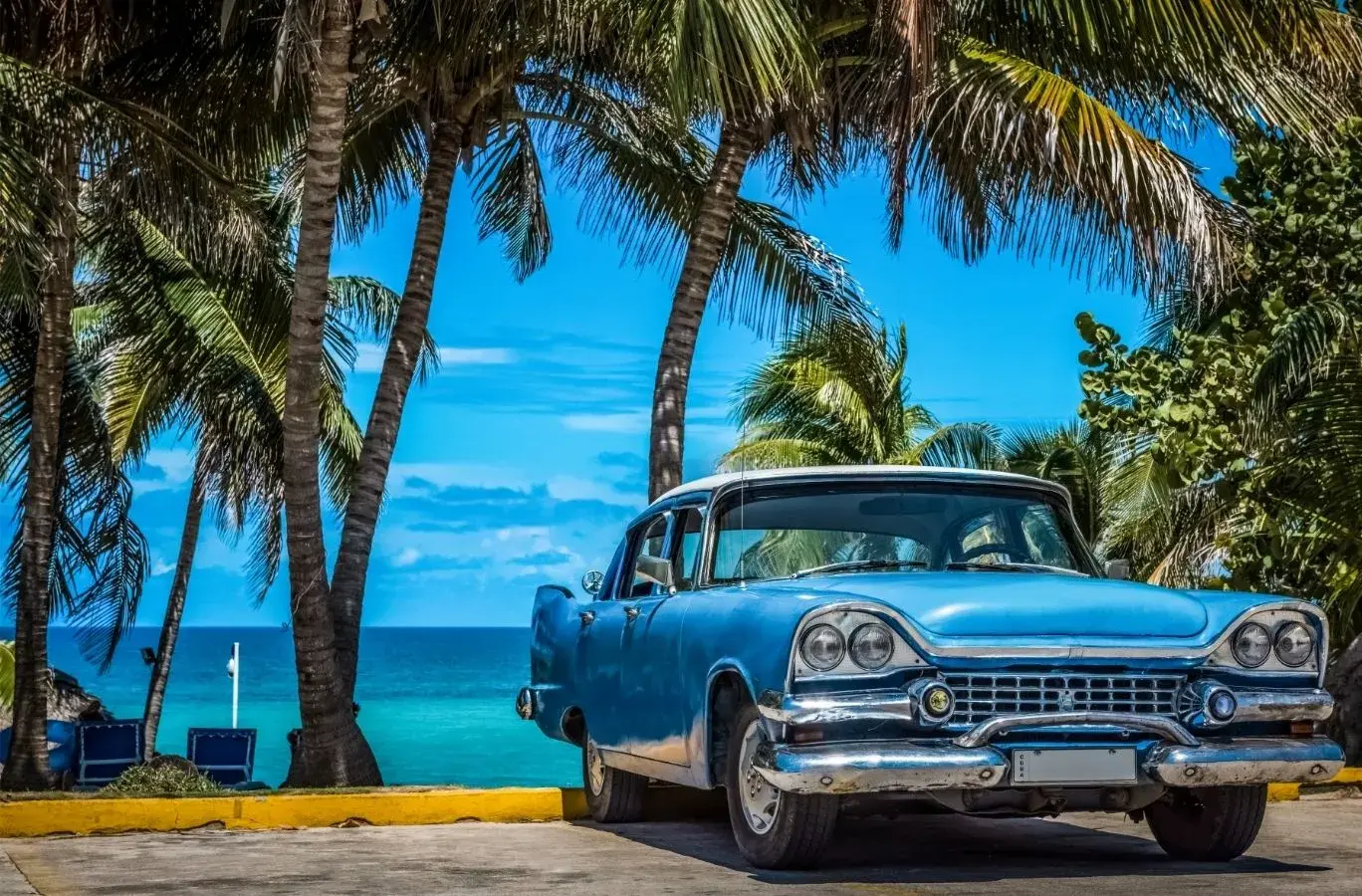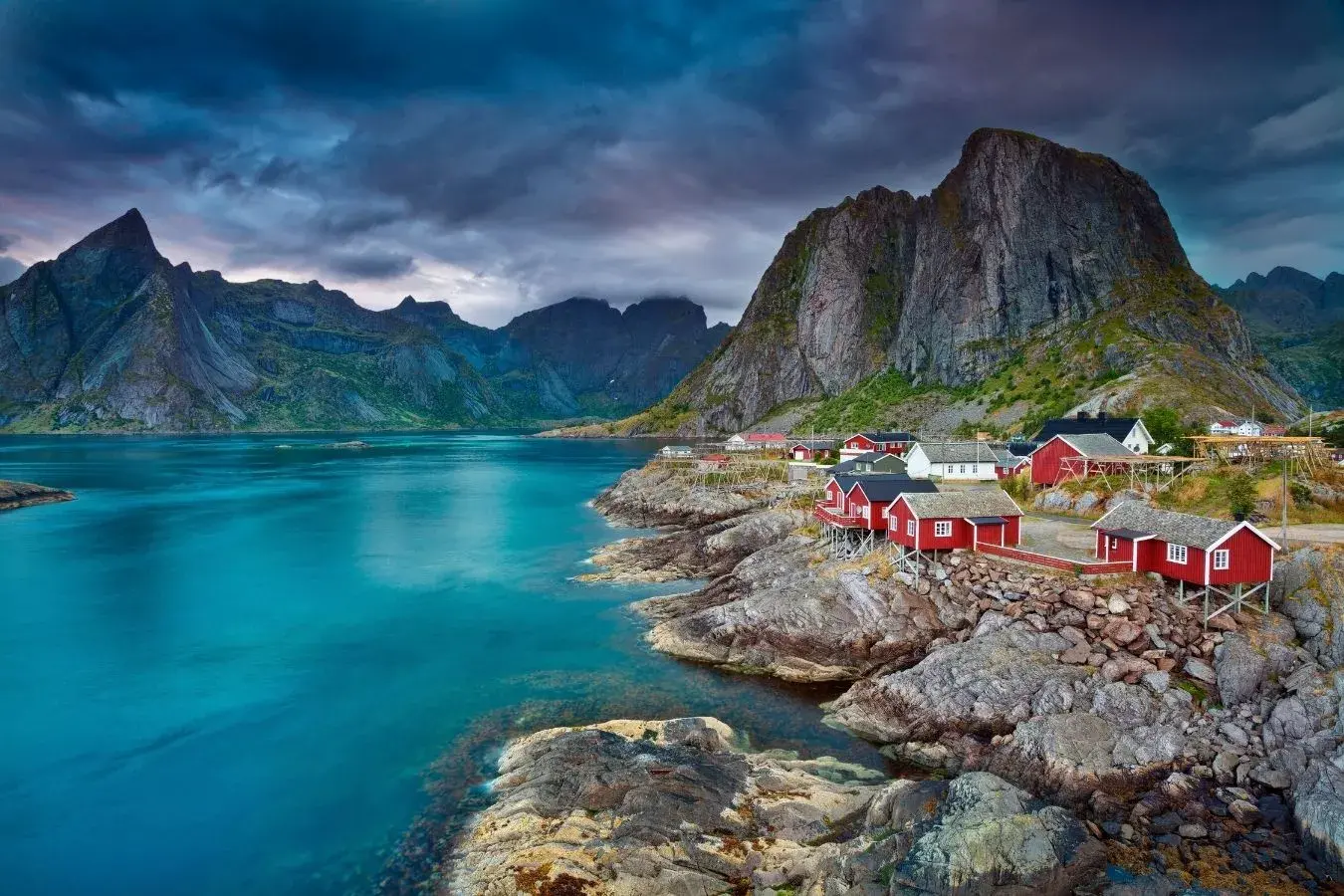Top Tourist Attractions of Rio de Janeiro


by Asia A. | Last Updated June 19, 2025
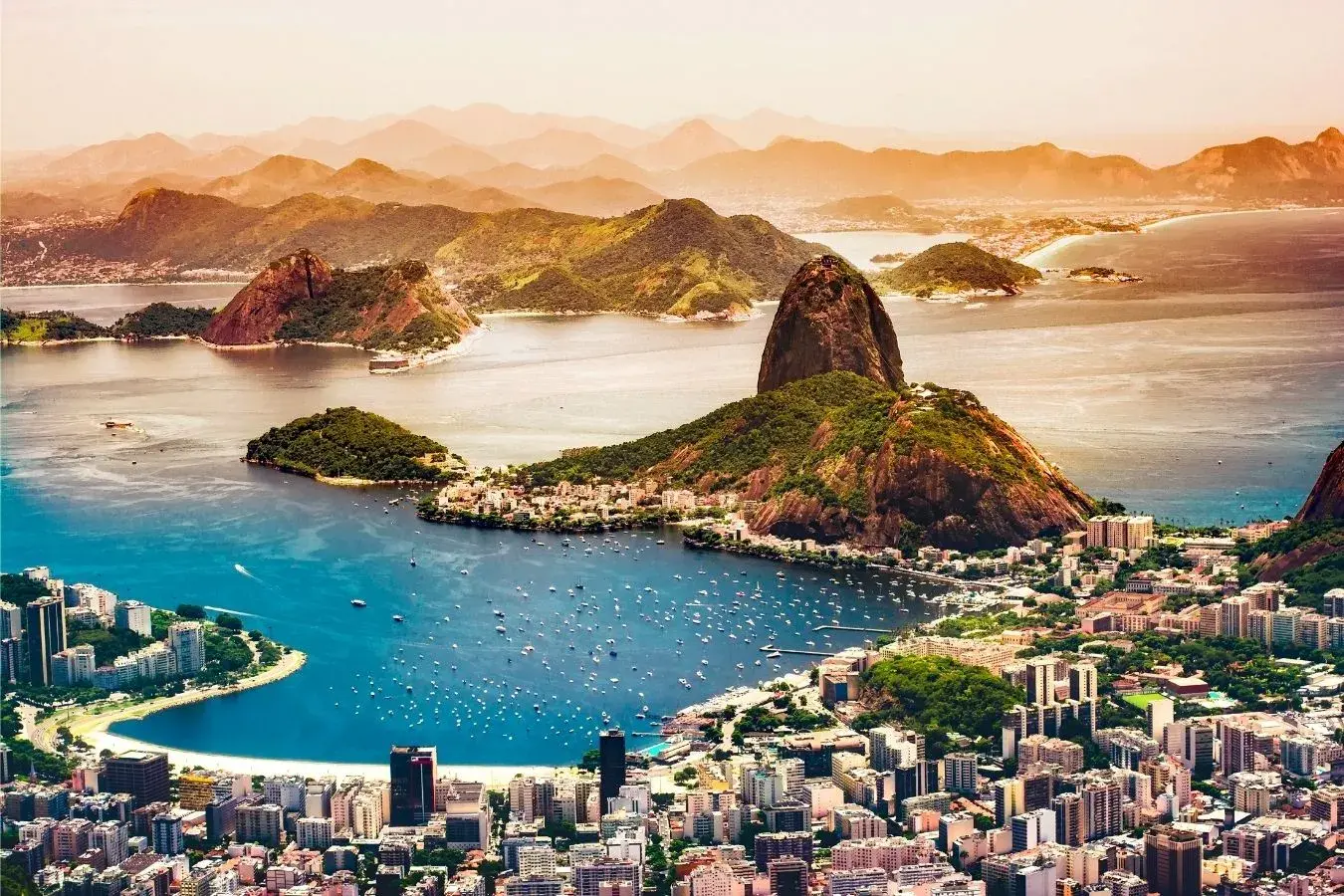
- This Destination Has a Free Tour offer
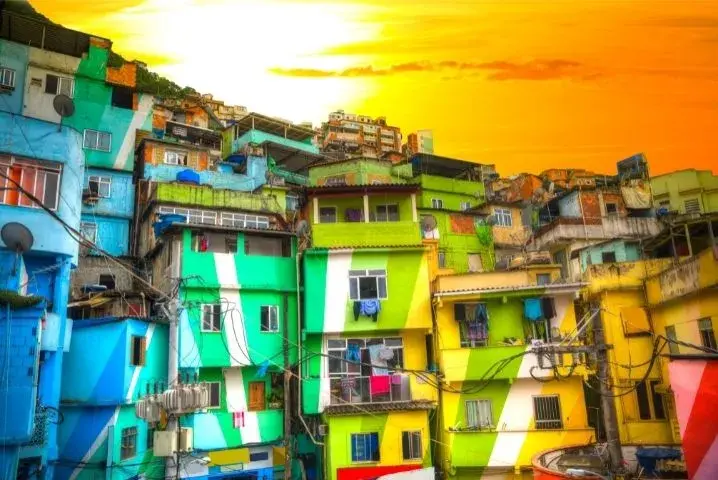
Rio de Janeiro is the second-largest populated city in Brazil and the third in South America. It is located on a series of beautiful beaches along the Atlantic Ocean on the mainland side of Rio de Janeiro State. The setting is so spectacular that UNESCO has cited the stunning location as one of the world’s heritage sites. UNESCO’s acclaim wasn’t just about the beauty of nature, but also about the urban design and the mix of architecture and green spaces that defined the city’s growth.
The city was founded by Portuguese colonists in the 16th century and became the port for the shipment of gold from the inland mining areas. It was the capital of Brazil from 1763 until 1960 when it became Brasilia.
Rio has long been aware of its physical assets. From its mountain backdrop to its broad, sandy beaches and busy harbors, Rio knows what it has. And, it has used that knowledge to enhance the landscape with some beautiful buildings, lush green spaces, and vibrant neighborhoods.
Rio is one of the world’s most popular destinations, but there’s so much more to do than just party in Rio. We’ll show you what there is to see, from the Copacabana and Botafogo beaches to the Cidade Maravilha (Marvelous City) favelas to historic churches and museums in our compiled list of top tourist attractions of Rio de Janeiro.
Explore More Destinations in Brazil
Explore More Destinations:
Top-Rated Tourist Attractions in Brazil
Top-Rated Tourist Attractions in São Paulo
Christ the Redeemer (Cristo Redentor)

The Giant Christ Statue is one of the most recognizable symbols of Rio de Janeiro, Brazil, on Corcovado Mountain. The statue stands over 709 meters above sea level, has become a symbol for Rio featuring the city to the world.
This world-famous landmark was built between 1922 and 1931, Brazilian Catholics contributed to financing the entire project.
The Art Deco statue was made by Polish-French sculptor Paul Landowski and then engineered by Brazilian engineer Heitor da Silva Costa and French engineer Albert Caquot.
The figure is made of concrete and soapstone, standing at 30 meters tall, and has arms that stretch 28 meters. It weighs 635 metric tons. The bottom of the base is eight meters high; it has a chapel inside those hosts ceremonies including weddings & baptisms.
The statue is a major tourist attraction of Rio and can be reached by taking the Corcovado Rack Railway. This track starts at Rua do Cosme Velho and winds its way up to the statue passing through Tijuca National Park.
You can visit Christ the Redeemer without the typical crowds. With the dawn’s early light and by early morning light on a guided tour, you’ll get to see the Christ the Redeemer statue on the top of Sugarloaf Mountain.
Sugarloaf

The rock of the Sugarloaf, a cliff-like formation that rises 394 meters above the bay, is one of Rio de Janeiro’s most recognizable landmarks that is most visited by both locals and tourists. It can be reached by a cable car from Praça General Tibúrcio.
A second cable car runs from the lower peak of Morro da Urca to the top of Sugarloaf, to get a good view of what makes Rio such a great destination, you can see the entire mountainous coast that rings the bay and its islands from this viewpoint.
At the foot of Sugarloaf, you can find the 100-meter Praia da Urca beach which is close to the location of the city’s original center. You can also see the star-shaped Fort São João on Cara de Cão, one of the city’s three forts that date back to the 16th century which is open to the public.
Copacabana

Few cities boast a beautiful sand beach at their center and one that stretches four kilometers along one side of the downtown. The view from Rio’s famous beach is stunning, a few steps away from its sands you will find Avenida Atlântica, Avenida Nossa Senhora de Copacabana, and the neighboring smaller streets where you’ll find enchanting century-old buildings, luxury hotels, and the city’s finest restaurants and cafés.
The world-famous Copacabana Palace hotel in Rio de Janeiro stands as a monument to the former glory of Brazil. The hotel opened in 1927, and the Copa has been synonymous with luxury ever since. In fact, it’s even been the setting for movies like “Flying Down to Rio” and has hosted several Hollywood celebrities like Marlon Brando and Elizabeth Taylor.
At the northern end of the famous beach, you will find the Copacabana fort which was constructed in 1914, It was the scene of a rebellion in 1922 by some officers who took the fort and pointed the artillery towards the city. This action led to the very short battle between the rebels and the government which bombarded the fort to end the revolt.
The Museu Histórico do Exército (Museum of the History of the Army) is now housed in the fort tells the story, and it offers extensive collections of uniforms, arms, artillery, medals, flags, photographs, documents, and exhibits. On the outside grounds, you can see cannons from the late 19th and early 20th centuries.
Ipanema

Continuing to the west from Copacabana’s four-kilometer strand, the beaches of Ipanema and Leblon are separated by the Jardim de Alá Canal, Lagoa Rodrigo de Freitas. The area is lined with large hotels, sidewalk cafés, and restaurants.
Ipanema and Copacabana are two well-known beaches in Rio de Janeiro, but they also have a cultural life to go along with them. They have art galleries, cinemas, and a modern-art theater.
Praça de Quental in Leblon is famous for hosting an antique market every Sunday and attracts many visitors from around the city. The market in Praca General Osorio is a great place for you to pick up some crafts, jewelry, and artwork. There are also many restaurants and bars to enjoy during your shopping experience.
Carnival (The Carnaval)
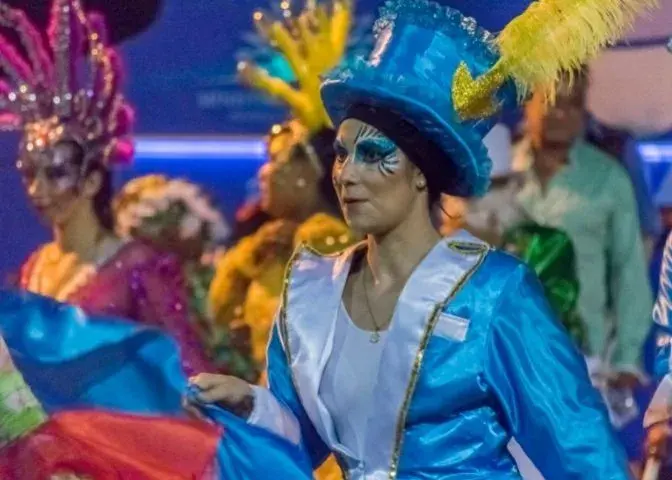
The Carnival is one of the world’s most famous pre-Lenten celebrations, the biggest event in Brazil, and a major attraction for tourists. The celebrations begin days after New Year, but the splendor reaches its spectacular climax in the four days before Ash Wednesday, attracting thousands of spectators to its street parades, samba parties, and shows. Other Brazilian cities such as Curitiba, Bahia, and Recife host their own carnival, but Rio’s is the most lavish.
The most spectacular events are the parades of the samba schools, which are held in a unique venue designed by renowned Brazilian architect Oscar Niemeyer. The Sambódromo is a long, stadium-style parade route lined with boxes designed to hold up to 90,000 people. The parades of brightly costumed dancers compete for that draw in spectators from around the world. The parade route is about 700 meters long and 13 meters wide. The route was first used in 1984 and updated as a venue for the 2016 Olympic Games.
Tijuca National Park

Tijuca National Park is known for its beautiful views of the city and for protecting the Tijuca Forest. It borders Cristo Redentor, the giant-sized statue of Christ on Corcovado Mountain. To tour the park, you can get off the train at a midpoint and walk through the forest.
The Tijuca Forest is one of the world’s largest forests within a city, and a great place to see native wildlife. With over 3,300 hectares of trees, shrubs, and plants, you can find many birds and a wide range of animals, like capuchin monkeys, quatis (Brazilian raccoon), toucans, brilliant blue butterflies, and many others. The forest is also a major source of water for the city.
Nearby the station of the Corcovado railway is Largo do Boticário, one of Rio’s most picturesque squares surrounded by Lisbon-style houses. You can see amazing views of the Municipal Park, the Botanic Graden, and the south coast, from the pagoda-style pavilion at Morro da Vista Chinesa, 380 meters above the shore.
Views from Mirante Dona Marta are outstanding, above Botafogo Bay on a rocky peak, The various waterfalls that drop from the forest springs are breathtaking, including the 30-meter Cascatinha Taunay.
Set in vast gardens near the park is the Museu d’Açude, with the interesting porcelain collections of the West India Company, old paintings of Rio de Janeiro by Brazilian and foreign artists; and Azulejos, traditional Portuguese tiles from the 17th to the 19th century.
Read More:
Top-Rated Tourist Attractions in Brazil
Botanical Garden (Jardim Botânico)

Rio de Janeiro’s Jardim Botanico is a 350-acre park located at the foot of Corcovado Mountain, it combines an ecological sanctuary with a stunning garden and a scientific laboratory. The site is a beautiful attraction for locals and tourists alike.
Highlights here are an iron & glass greenhouse built in 1930, filled with thousands of different types of orchids, as well as Japanese Gardens which have many cherry trees, koi ponds, Bonsai, and wooden bridges to wander over.
A Sensory Garden signed in Braille and filled with different aromatic plants and herbs. It’s a UNESCO biosphere reserve, it contains more than 8000 species of plants. It is also home to many unique birds and animals like the Marmosets monkeys and toucans. You can tour the gardens, under the rising royal palms and pau-brasil trees, or ride on an electric cart tour.
Little Beach (Prainha Beach)

If you liked the beaches of Copacabana and Ipanema, but still crave more, Prainha is a wonderful place to take a 20-kilometer jaunt down to. As the ocean meets the rainforest there, it’s a natural unique beach than the ones in Rio, and any traveler would love to take the experience of spending a day here.
The turquoise waves are lapping the golden sands and large round boulders while the sun shines overhead. If you’re an avid surfer and want to practice your skills, this place is ideal for surfers.
Maracanã

Football fans can not miss visiting Brazil’s largest iconic stadium, which was home to the opening and closing ceremonies of the 2016 Summer Olympic Games. It was completely renovated for the FIFA World Cup 2014 and holds more than 78,000 spectators (210,000 before the new rules by FIFA).
The stadium is used for matches between Rio’s top football clubs, Fluminense, Vasco da Gama, and Botafogo. It’s also ideal for hosting concerts and is a great place to visit if you’re an avid supporter.
Other Olympic events took place on the shore of Lagoa Rodrigo de Freitas near Copacabana and Ipanema. It’s lined by parks and sports clubs, and its waters are famous for regattas and other water sports.
Santa Tereza and Escadaria Selarón
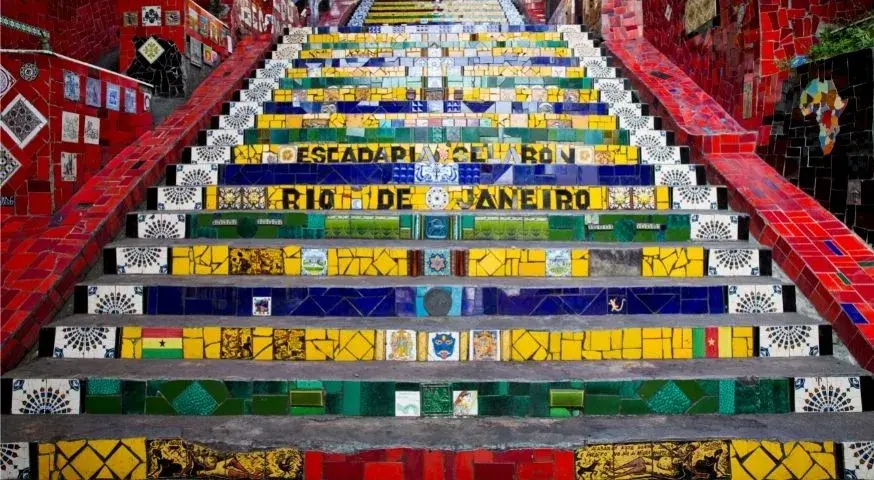
Santa Tereza is Rio’s most atmospheric neighborhood, a district of steep, quiet streets and hundred-year-old houses. The Bohemian atmosphere, with unique cafés and restaurants, is a favorite refuge for artists and intellectuals. Although the streets are filled with beautiful views, it is possible to see other things like the church and convent of Santa Tereza, which dates to 1720.
The Museu Chácara do Céu has an extensive collection of modern & classical works that showcase world-renowned artists, including Picasso, Miró, and Matisse. It also has a Chinese sculpture from the 17th to 19th centuries. The Adjacent Parque da Ruinas is a socialite’s mansion that fell into disrepair and now serves as an art, music, and performance venue.
The Escadaria Selarón is one of Rio’s newest attractions located at the edge of Santa Tereza, a neighborhood in Rio de Janeiro’s Lapa district. Jorge Selarón was a Chilean artist who lived and worked in Brazil from 1990 until his death in 2013, he covered a long flight of steps in front of his house with Brazilian flag color mosaics made of mirrors, tiles, pottery.
Selarón found many interesting materials that can be used to make this beautiful artwork from construction sites and demolished buildings. But as his artwork drew the attention of tourists, they began bringing him pottery and tiles from all over the world. over 300 different countries are represented in the 250 steps, which cover 125 meters of stairs.
São Bento

Located on a hill overlooking the harbor are the Church and the Monastery of São Bento, one of the finest structures in Brazil. the original 1617 church was without aisles until it was extended in the second half of the 17th century by adding eight side chapels. The ultra-fine artists of the Benedictine order were involved in decorating the interior.
The cheerful carving on the walls, ceiling, and altar was mostly the work of a monk named Domingos da Conceição, he was also responsible for figures of St. Benedict and St. Scholastica on the soaring altar.
The choir chapel has silver work by Mestre Valentim and paintings by Ricardo do Pilar, a monk who was the foremost Benedictine painter of colonial Brazil. He is best known for his painting of Senhor dos Martírios (Christ of the Passion), in the sacristy of the monastery.
Municipal Theater (Teatro Municipal)
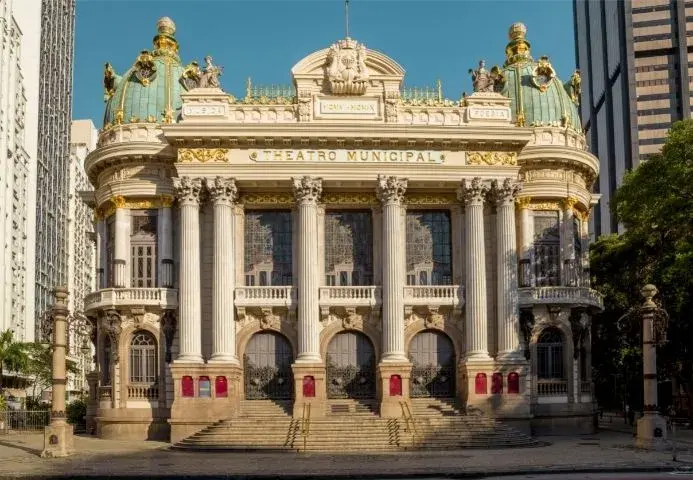
The Grand Municipal Theater was built in the early 20th century and was inspired by the Parisian Opera of Charles Garnier. The interior of this majestic theater is even more ornate and luxurious than the imposing towered façade.
Among the highlights to see here are the sculptures by Henrique Bernardelli and paintings by Rodolfo Amoedo and Eliseu Visconti, as well as the drop curtain, proscenium frieze, and the ceilings.
It would be great if you have the chance to attend a classical concert or a ballet performance if not, you can take a guided tour where the English language is supported.
Quinta da Boa Vista

Now all of the gardens, villas, and palaces of São Cristóvão are public parks and museums. In particular, the most important one is called Quinta da Boa Vista.
From 1808 to 1889, the palace was the residence of the royal and imperial families. It has been altered and rebuilt as Palácio de São Cristóvão- preserving its historical importance. This Palace houses the National Museum, which showcases the widest variety (more than a million items) of zoological, botanical, ethnographic collections that Brazil has to offer- all under one roof.
The expansive park offers a lot of great places to explore with gardens, lakes, and caves that you can reach via a miniature railway. It also has a zoo with over 2,000 different species of animals from Brazil and all over the world.
Ilha de Paquetá
The island of Paquetá lies in Guanabara Bay, an hour’s boat trip from the city center. It was once a fashionable resort in the early 1800s when Portuguese Emperor Dom João VI spent his summers on the island (Brazil’s colony became the seat of the Portuguese Empire in 1808 when the armies of Napoleon occupied Portugal).
Dom João VI used to like to stay in Solar del Rey palace, one of the interesting old buildings that include the 1698 chapel of São Roque and the house of the father of Brazilian independence José Bonifácio de Andrada e Silva.
The island is an auto-free zone, the only way to get around is by bicycle, on foot, or in a horse carriage. The island is a popular tourist destination, and its main attraction is the Paquetá beach. If you are looking for a quiet and serene getaway from city life, then Ilha de Paqueta is the place to be!
Catedral de São Sebastião
Edgar Fonseca, the architect behind Rio’s Catedral de Sao Sebastiao, interpreted the soaring forms of the Mayan pyramids and incorporated them into a modern cathedral. The cathedral was built between 1964 and 1979, they call it the new cathedral to distinguish it from the famous Nossa Senhora do Carmo. Four magnificent stained-glass windows rise 65 meters from the floor to light the interior with bright natural light.
Explore More Destinations:
Top-Rated Tourist Attractions in Brazil
Top-Rated Tourist Attractions in São Paulo
Top-Rated Tourist Attractions in Italy
Top-Rated Tourist Attractions in Egypt
10 Top-Rated Tourist Attractions in France
Top-Rated Attractions & Things to Do in Morocco
Tours & Excursions in Rio de Janeiro
Visa & Health Requirements
Please make sure you check all the information you need to know about the passport, visa, and health requirements of your destination.
Check out all the data provided by IATA (International Air Transport Association)


